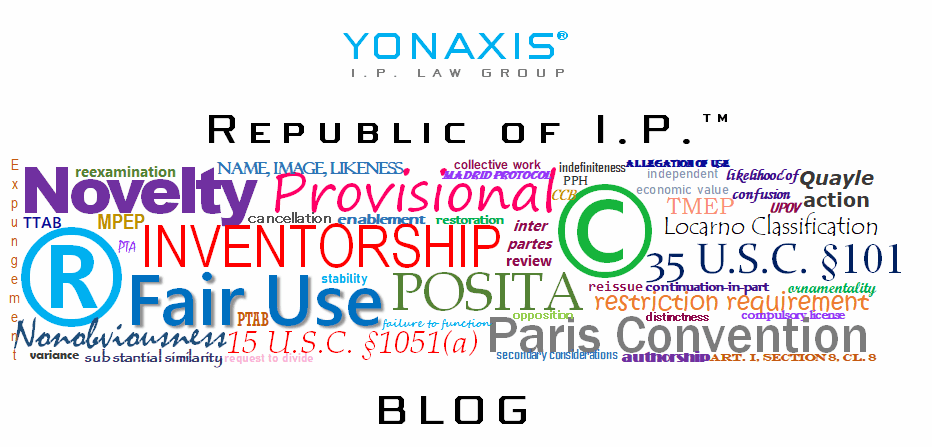Color Marks: The Basics
Color marks represent one of the more challenging types of non-traditional trademarks. Since the landmark Supreme Court decision in Qualitex Co. v. Jacobson Products Co.,1 single colors can serve as trademarks when they identify the source of goods or services. However, obtaining trademark protection for a color presents unique hurdles:

- Acquired Distinctiveness Required: unlike words or logos, colors are never inherently distinctive. A color can only be registered as a trademark if it has acquired distinctiveness, or “secondary meaning” – when consumers have come to associate that particular color with a specific source.
- Functionality Bar: colors that serve a functional purpose cannot be registered, regardless of any secondary meaning they might have acquired. This prevents companies from monopolizing features that competitors need to compete effectively.
- Aesthetic Functionality: even when a color doesn’t serve a utilitarian function, it may be deemed “aesthetically functional” if exclusive use would put competitors at a significant non-reputation-related disadvantage.
- Genericism: colors can be deemed generic and thus unregistrable when they’re so widely used in an industry that they signify the product itself rather than a particular producer.
Last month, the U.S. Court of Appeals for the Federal Circuit addressed in In re PT Medisafe Technologies,2 the protectability of color marks in the medical industry. The opinion provides clarification on when a color can be considered “generic” and thus unregistrable as a trademark. This case specifically examined whether the color green for medical examination gloves is generic.
Test for Generic Marks
The test for generic marks is a two-prong approach. First, what is the genus of goods or services at issue? Second, is the term sought to be registered understood by the relevant public primarily to refer to that genus of goods or services?3
The Marvin Ginn test is modified for color marks using the Milwaukee test: after going through the two-prong Marvin Ginn test, the inquiry further analyzes whether the color is so common within that relevant genus that consumers primarily associate it with the genus rather than as an indicator of a unique source of goods within that genus.4
This represents an extension of genericism doctrine to non-verbal marks, emphasizing that any purported trademark—word, symbol, or color—that primarily denotes the product itself rather than its source cannot function as a trademark.
The PT Medisafe decision held that the color green for medical examination gloves is generic and thus ineligible for trademark registration. The Fed Circuit panel agreed with the TTAB that the appropriate genus is chloroprene medical gloves, and the color green is so commonplace that is is incapable of identifying a single source. Other TTAB evidence included various resellers selling the same green medical gloves that did not indicate Medisafe’s gloves. Further, third-party evidence was introduced selling similar green chloroprene medical gloves as Medisafe’s indicated that its color green had no source-identifying significance.
Implications
There are several implications as a result of this ruling:
- Higher Bar for Color Marks: The decision raises the bar for companies seeking to register color marks in industries where color choices are limited or where colors are commonly used.
- Industry-Specific Analysis: The ruling emphasizes that genericism analysis for color marks must be highly industry-specific. A color that might be distinctive in one industry could be generic in another.
- Evidence Requirements: Companies seeking color mark protection should be prepared to present strong survey evidence showing that consumers specifically associate the color with their brand, not just with the product category.
- Strategic Considerations: Businesses might need to reconsider relying solely on color as a source identifier, instead combining distinctive colors with other elements like patterns or logos.
Conclusion
For companies seeking to protect color as part of their brand identity, this case serves as a reminder that widespread use of a color within an industry can render it generic and therefore unprotectable. The decision strikes a balance between protecting legitimate source-identifying marks and preventing improper monopolization of basic product features that should remain in the public domain.
Companies would be wise to conduct thorough trademark clearance research before investing heavily in color-based branding, particularly in industries where certain colors are already commonly used or where color-coding serves important practical functions. For more information on generic marks, color marks, or trademark law in general, please contact Yonaxis I.P. Law Group.
- 514 U.S. 159 (1995). ↩︎
- ___F.4th___ (Fed. Cir. 2025). ↩︎
- See H. Marvin Ginn Corp. v. International Ass’n of Fire Chiefs, Inc., 782 F.2d 987, 990, 228 USPQ 528, 530 (Fed. Cir. 1986); TMEP 1209.01(c). ↩︎
- See Milwaukee Electric Tool Corp. v. Freud America, Inc., Ser. No. 92059637, 2019 WL 6522400 (TTAB Dec. 2, 2019). ↩︎
